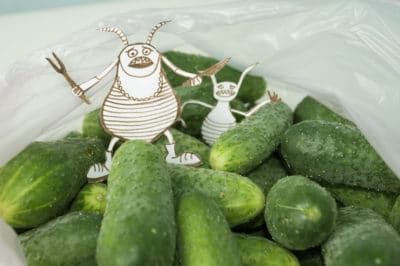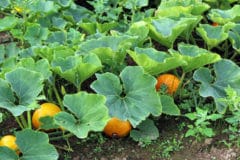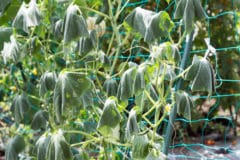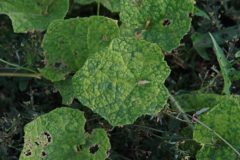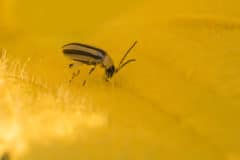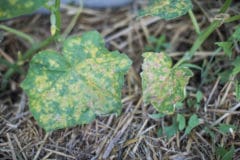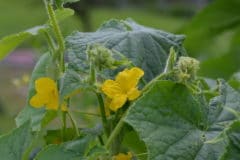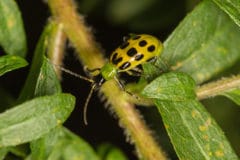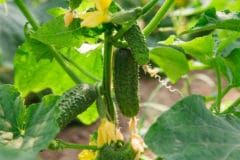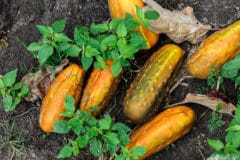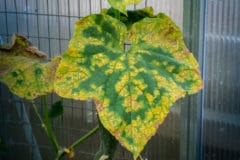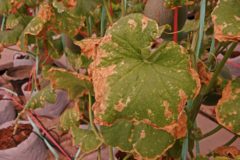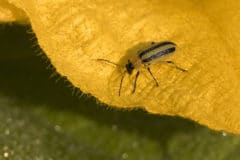Insect Invaders
Cucumbers certainly attract their share of insects . The four most troublesome — including two that spread serious diseases — are:
- Spotted, striped or banded cucumber beetles chew holes in cuke leaves and flowers; their larvae feast on the roots. They also spread lethal bacteria wilt disease.
- Gray or brown, ½-inch squash bugs drain fluids from the backs of cuke leaves.
- The larvae of spotted white moths, yellowish-green pickleworms tunnel into flowers and developing fruit.
- Colonies of 1/16- to 1/8-inch aphids suck the sap from cuke stems and leaves while transmitting cucumber mosaic virus.
Pest Prevention
Keep these pests at bay by draping the cuke bed with fabric row covers at planting. The growing seedlings lift the covers, which are made permeable fabric that lets sun, air and water inside while excluding the bugs. Secure the row covers with rocks or soil so no creepy-crawlies make it through.
Cuke Diseases
Stopping cuke beetles and aphids also protects cukes from wilt and mosaic virus, but it doesn’t thwart other common diseases, including:
- Powdery and downy mildews
- Anthracnose
- Angular and other leaf spots
- Scab
Preemptive Disease Control
With our two-pronged approach, you can keep disease out of your cuke patch — or at the very least, minimize its effects. All you need are advance planning and persistence.
Cultural Control
Growing a healthy cuke crop begins with removing the plant debris from your garden every fall. A month before planting, amend the soil with a 2-inch layer of organic compost. Allow 6 feet between sprawling and 3 feet between trellised cukes. Provide 1 to 2 inches of weekly water, preferably by soaker hose or drip system.
Expert gardener’s tip: Trellising is the best way to safeguard your cukes from disease.
Plant Disease-Tolerant Cukes
Disease neither kills these cukes nor reduces their production. A great slicing variety is ‘Eureka,’ which tolerates mosaic virus, mildew, scab, leaf spot and anthracnose. Among picklers, ‘Little Leaf’ has high resistance to bacterial wilt, leaf spot and anthracnose — and its leaves are small enough to make spotting the fruit at harvest time a snap.
